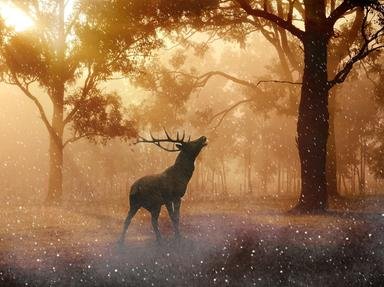Quiz Answer Key and Fun Facts
1. Which of these is an alternative name for the gnu?
2. The gnu is native to which continent?
3. The gnu is a member of which animal family?
4. There are two species of gnu - the white-tailed and the brindled. They are also known by which two colours?
5. Which gnus have horns?
6. When pronouncing the name, the letter 'g' in gnu is always silent.
7. Between 1950 and the end of the twentieth century, what happened to the gnu population?
8. The flesh of the gnu is a major source of which dried meat product?
9. Which of these is NOT a recognised predator of the gnu?
10. Based on their diet, gnus are classed as which of these?
Source: Author
rossian
This quiz was reviewed by FunTrivia editor
Tizzabelle before going online.
Any errors found in FunTrivia content are routinely corrected through our feedback system.


